By Alex Trukan
With a lot of the teams becoming very effective in building up from the back, defending teams have to learn how to prevent opposition playing through the thirds. Also from the attacking point of view, it makes more sense to win the ball closer to the opposition goal. Keeping the ball on the opposition’s half will also place a psychological demand on them, that might lead to making mistakes.
As soon as the ball is played out from the goalkeeper, the nearest players to the ball (usually strikers), need to apply the pressure on it. This will force the opposition to either play backwards or sideways. In the best case scenario, a striker might try to win the ball back and counter attack. In other cases, the defending team should work together to lead the opposition into other areas on their half where they want to win possession. The danger of applying too high pressing too soon is opposition playing long ball into their strikers. This is why, defending team might also consider dropping back and encouraging them to play short before starting the press. Once high pressing is applied, it should be done quickly so the opposition doesn’t have time to pass the ball long (getting the player on the ball to look down).
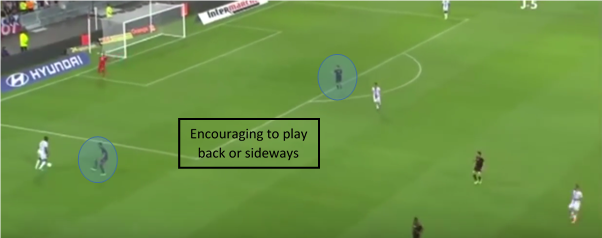
At this stage, when centre backs/goalkeeper have the ball, one of the biggest threats is a pass into a defensive midfielder that splits the two strikers. Here comes the role of a central midfielder who needs to track the opposition player and prevent him from playing forwards. If possible, a central midfielder might try to intercept the ball and start the counter-attack.
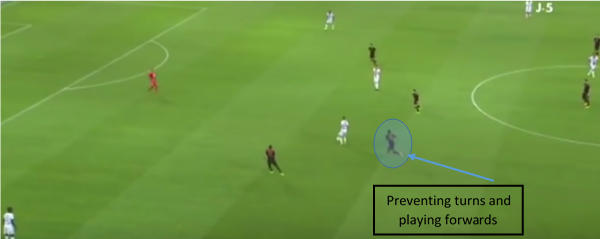
Spaces between opposition’s defenders and midfielders are a major threat to the defending team. Any opposition midfielders dropping into those half spaces should be tracked and pressed by midfielders. Strikers, in turn are responsible for any centre backs driving forwards.
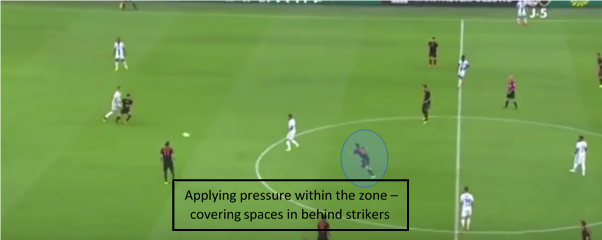
Other midfielders than those who press, have a responsibility to screen opposition players, and prevent forward passes. The distances between defending players should be tight and they should work as a unit. A team might choose to defend zonally or mark certain players individually.
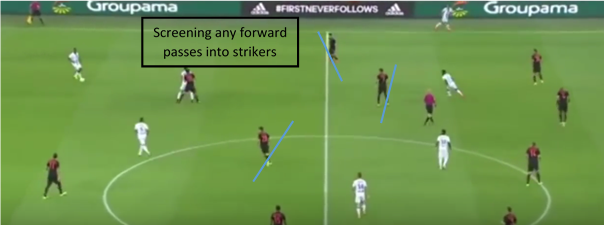
Given the centre of the pitch is screened and covered, the opposition will try to play sideways and beat the block by going around it. In order to make sure that the ball stays on the opposition half, as the ball is played wide, pressing applied should guide the full back on the ball towards central areas of the pitch. This will prevent passes into channels and stops him from using his stronger foot (in most of the cases).
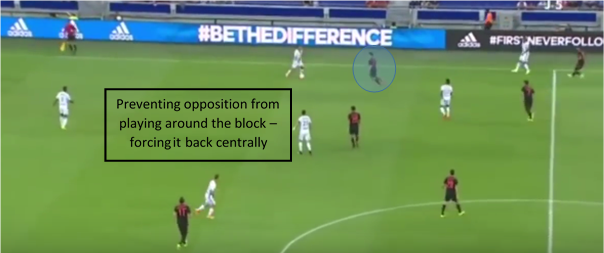
Another option might be to try and set a pressing trap once the ball is played wide. The key is to cut the nearest passing options, prevent the player on the ball from looking up (by pressure on it) as well as double up. This is usually a good strategy on the opposition half as doubling up closer to the own goal may cause problems around the ball (open spaces for other opposition players to run into).
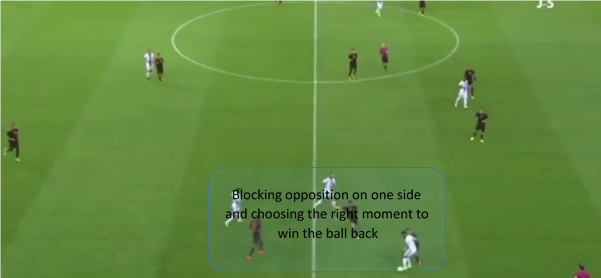
Keeping the ball on the opposition half does not necessarily mean applying constant high pressing. In fact, applying high press will usually cause the opposition to play long into their strikers. Applying medium press, with good defensive compactness, marking, cover and screening may be a more effective way of winning the ball closer to the opponent’s goal.
By Alex Trukan, Development Coach, Nottingham Forest
@AlexTrukan


